Bearded Dragon Shedding 101: Everything You Need to Know
Posted by TopFlight Dubia on May 28th 2025
Quick Takeaways: Bearded Dragon Shedding
|
What is Shedding in Bearded Dragons?
Shedding or ecdysis is a natural process in which a bearded dragon sheds its old skin to grow the new skin beneath.
Why do Bearded Dragons Shed?
Bearded dragons shed their skin for several reasons:
- The old skin gets dirty or damaged from climbing and exploring. So, they shed it to make way for a new, protective layer of scales.
- Shedding is a sign of healthy growth.
- If a bearded dragon’s skin gets injured or stops protecting them, they sheds it.
- New skin helps them absorb more calcium because it’s better at turning UVB light into Vitamin D.
- Shedding helps in removing old, dead skin. This helps in keeping them comfortable and healthy.
- Temperature changes also cause bearded dragons to shed. If the environment becomes dry, shedding may occur more frequently.
How Often Do Bearded Dragons Shed?
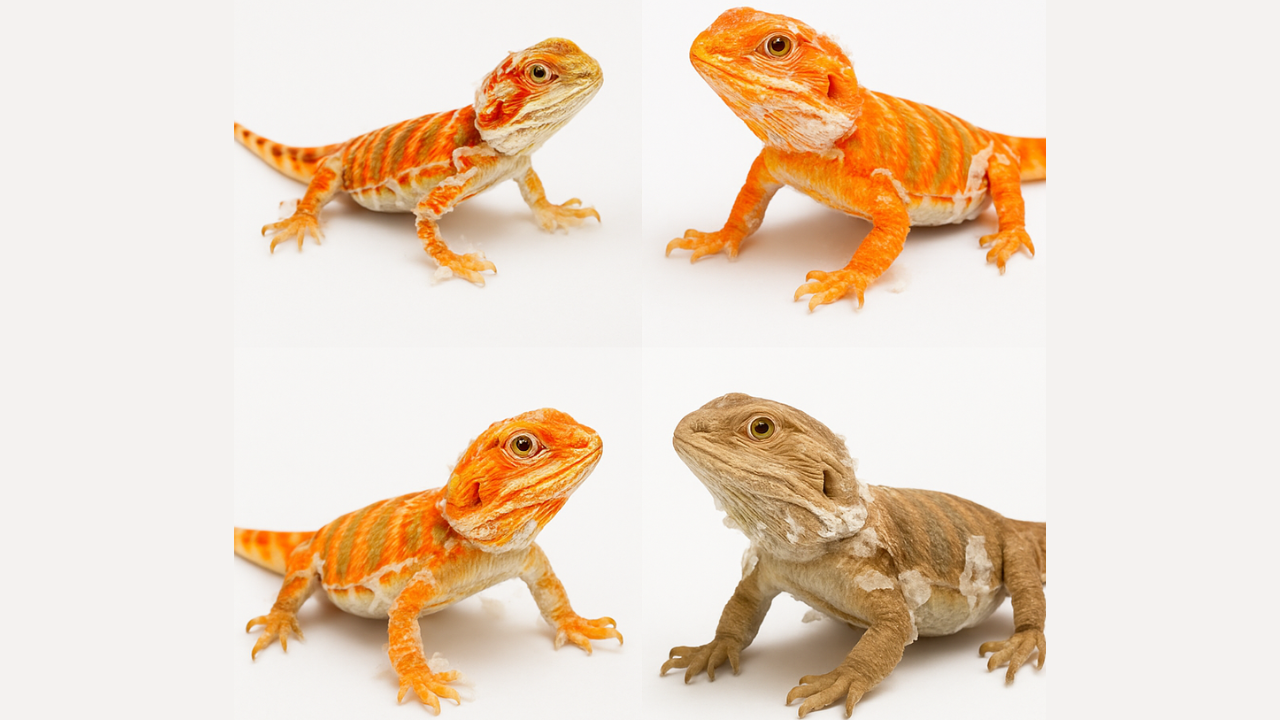
Bearded dragons usually experience their very first shed within the first few weeks of hatching.
|
NOTE: The initial shed within the first few weeks indicates healthy growth and active metabolism. So, if your pet doesn’t show the initial shedding during this period, you should consult with a vet. |
|
Growth Stages of Bearded Dragon |
Average Shedding Frequency |
Reason for Shedding |
|
Hatchlings (0–6 months) |
Every 1–2 weeks |
Their skin can’t stretch fast enough as they grow quickly. |
|
Juveniles (6–12 months) |
Every 3–4 weeks |
They are growing, but not as fast as hatchlings. |
|
Sub-adults (12–18 months) |
Every 4–6 weeks |
They are close to full size, with some shedding in patches. |
|
Adults (18+ months) |
Every few months (2–4 times/year) |
Shedding slows and usually only happens in parts like limbs, tail, or face. |
Key Points
- Younglings shed more frequently due to rapid growth.
- Adults shed less often, sometimes only 2- 4 times per year. It is normal for them to go 5-6 months or longer without a full-body shed.
- A full shed can take anywhere from a few days to up to two weeks, depending on your pet’s age, health, and environment.
- You might observe slower shedding in the winter, especially during brumation. Brumation refers to the slowing down of their metabolism.
- If your dragon isn’t shedding regularly but shows other signs of lethargy or loss of appetite, consult a vet.
Signs Your Bearded Dragon is About to Shed
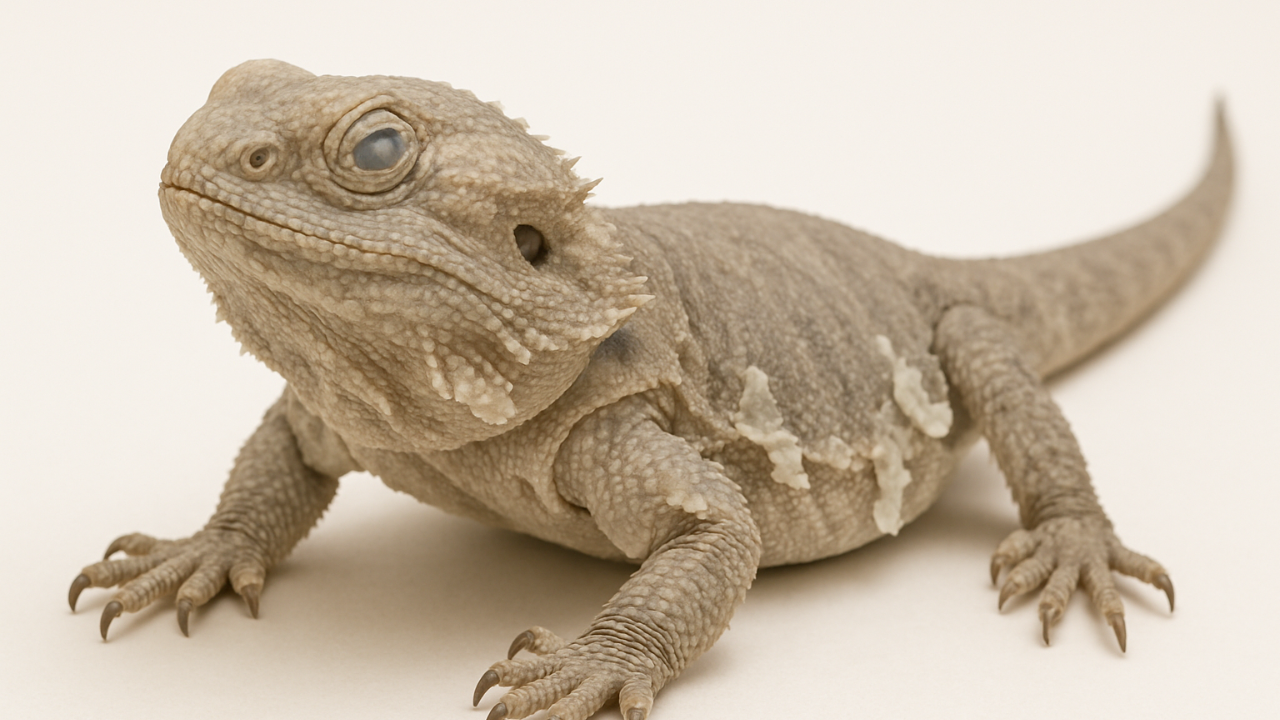
Physical Signs of Shedding
- The skin of dragons will lose its vibrant color and turn dull or faded, appearing pale, greyish, or chalky.
- Loose or “baggy” skin around the legs, tail, or face before the shed peels off.
- Peeling or flaking skin often tends to start in patches, especially in adult dragons.
- Cloudy eyes (less common) appear when skin near the eyes is about to shed.
- The skin might feel tougher or flaky when touched.
Behavioral Signs of Shedding
These behavioral signs can appear before and during the shed:
- To help loosen dead skin, your dragon may scrape against rocks, logs, or even tank walls.
- Shedding bearded dragons seek darker or quieter spaces to reduce stimulation.
- The bearded dragon might seem slower or less interested in basking or exploring.
- Some dragons may get irritated or restless while handling them.
- Bearded dragons, especially younger ones, tend to eat less during shedding.
|
NOTE: Many bearded dragons experience stress during shedding. Mild stress in dragons is not harmful but makes them behave differently. This behavior is normal and usually passes once the shedding is complete. |
How to Care for Your Bearded Dragon During Shedding?
Here's how you can create the ideal environment to support their shedding process:
1. Warm Water Soaks
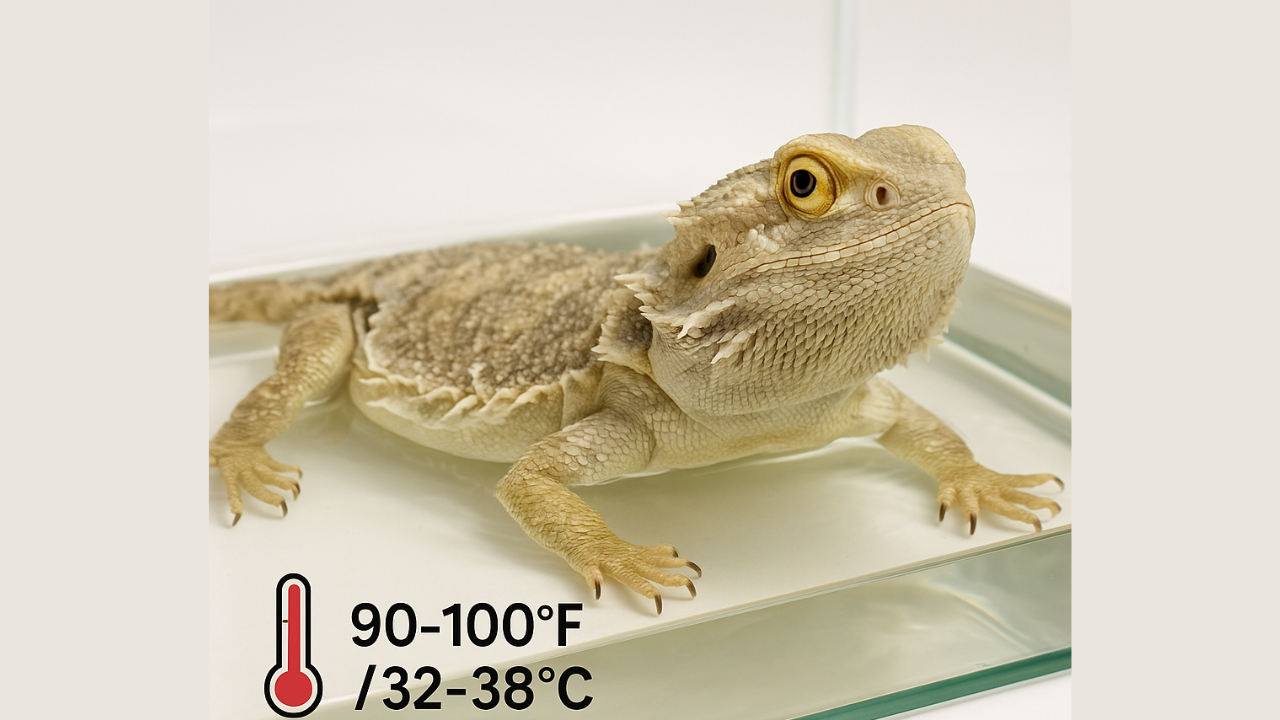
Provide warm water soaks to help them loosen skin and relieve discomfort.
- Soak your pet for 10-15 minutes in comfortably warm water (90-100°F or 32-38°C).
|
Tip: Gently run the skin with a soft cloth or toothbrush in the direction of scale growth to help with shedding. Always watch your pet closely while they are soaking. |
2. Maintain Proper Humidity

- Keep the humidity between 30% and 40%.
- Use a hygrometer to monitor levels.
|
Tip: A humid hide can help increase the moisture during shedding. Avoid over-misting the tank unless advised by a vet. |
3. Provide Surfaces for Rubbing
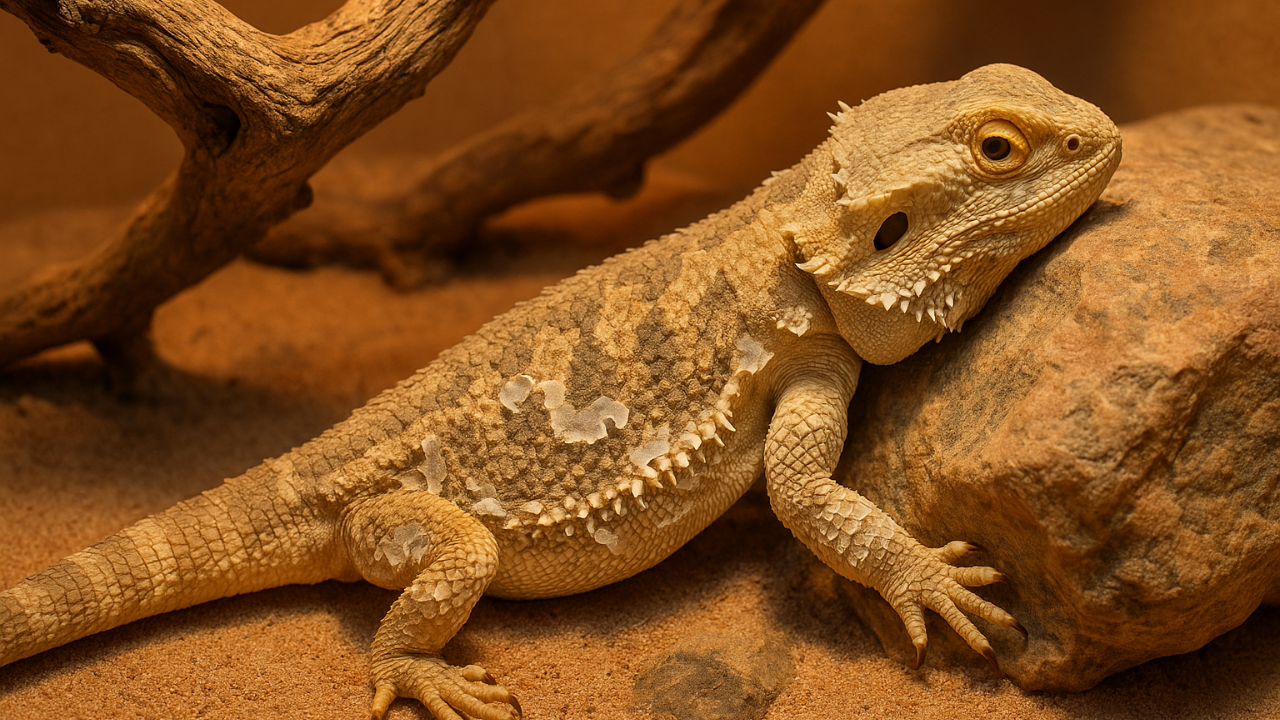
In the wild, bearded dragons rub against rocks, branches, and rough surfaces to help remove their old skin. So, add some props like rocks, branches, or textured decorations inside their tank.
4. Maintain the Right Temperature
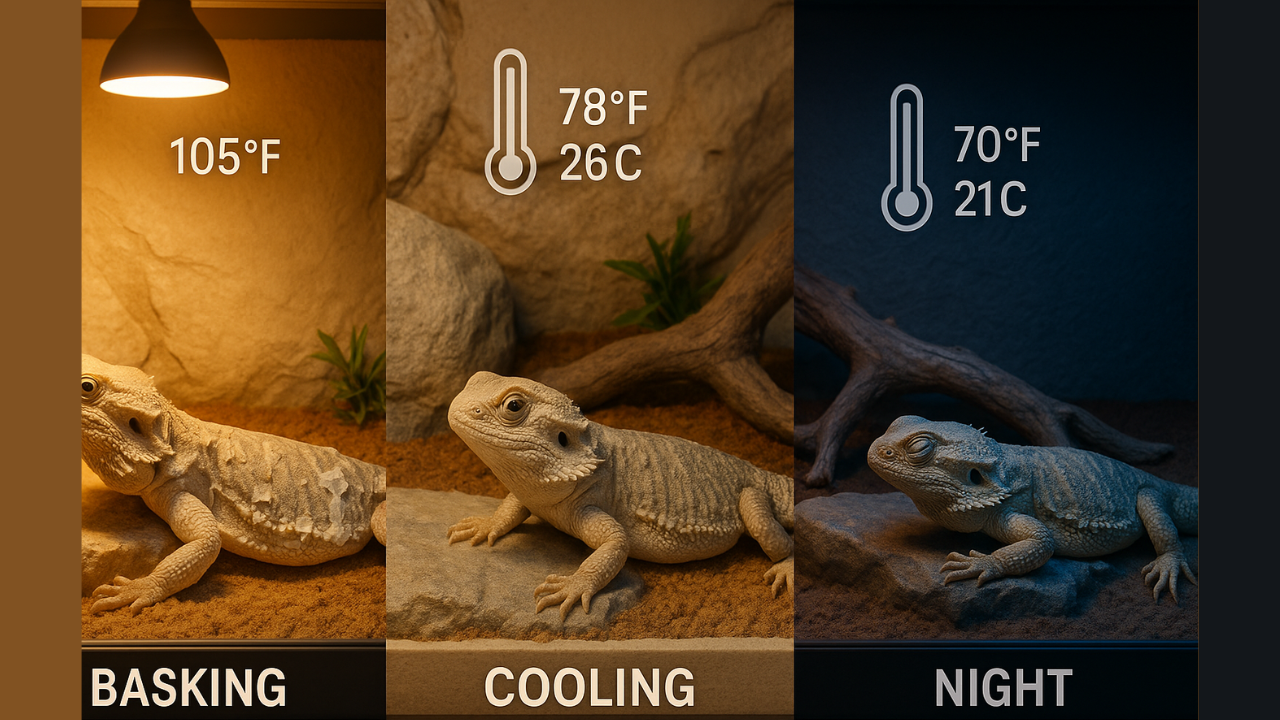
- Basking Spot (A designated area in the enclosure where a bearded dragon can soak up heat and light typically provided by a heat lamp or UVB light. )
- Basking surface temperature for adults: 100-110°F (38-43°C).
- Basking surface temperature for juveniles: 105-115°F (40-46°C).
- Ambient air temperature on the warm side: 85-95°F (29-35°C)
- Cool Area: Provide a cooler spot to escape if they get too warm. It should be around 75-85°F (24-29°C).
- At Night: Keep the temperature between 65-75°F (18-24°C), for a comfortable temperature gradient.
5. Ensure They Get Enough UVB Light
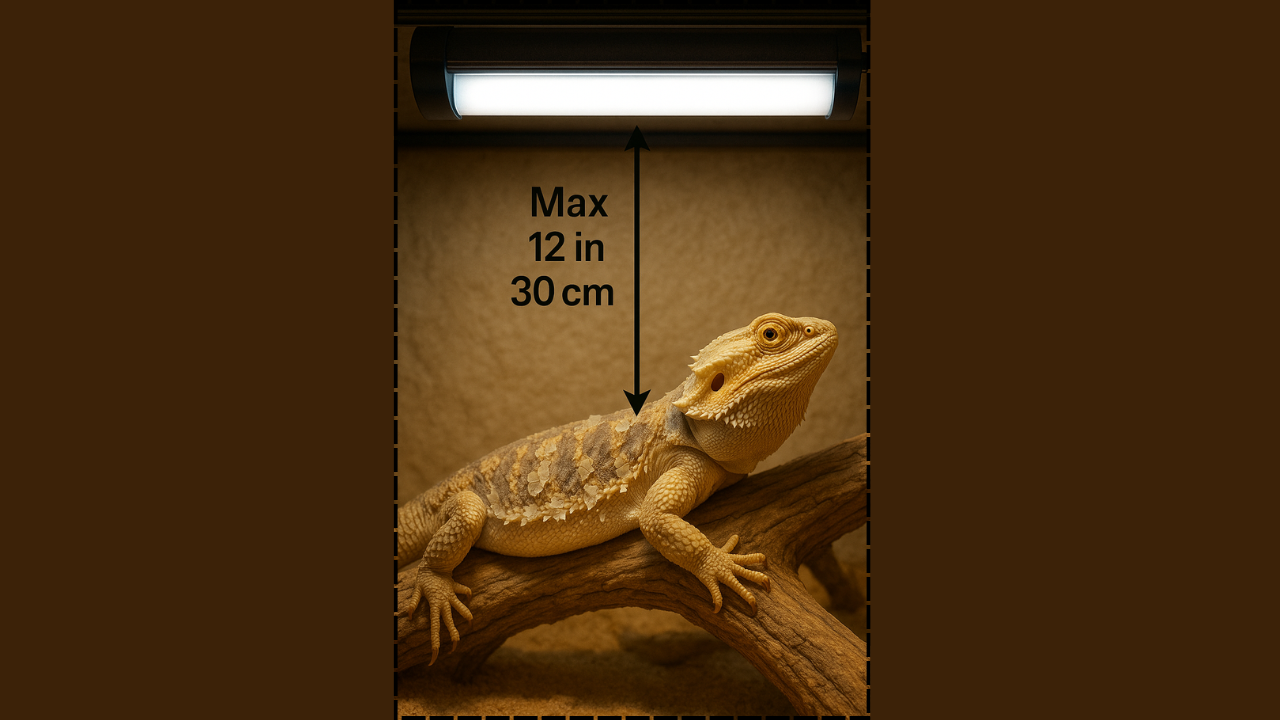
Bearded dragons need UVB light to absorb calcium and grow strong skin.
- Make sure the UVB light is no more than 12 inches (30 cm) above your dragon.
- Replace the bulb every 6-8 months, as the UVB output decreases over time.
|
Bonus Tip: Let your bearded dragon get some natural sunlight. |
6. Keep Their Enclosure Clean
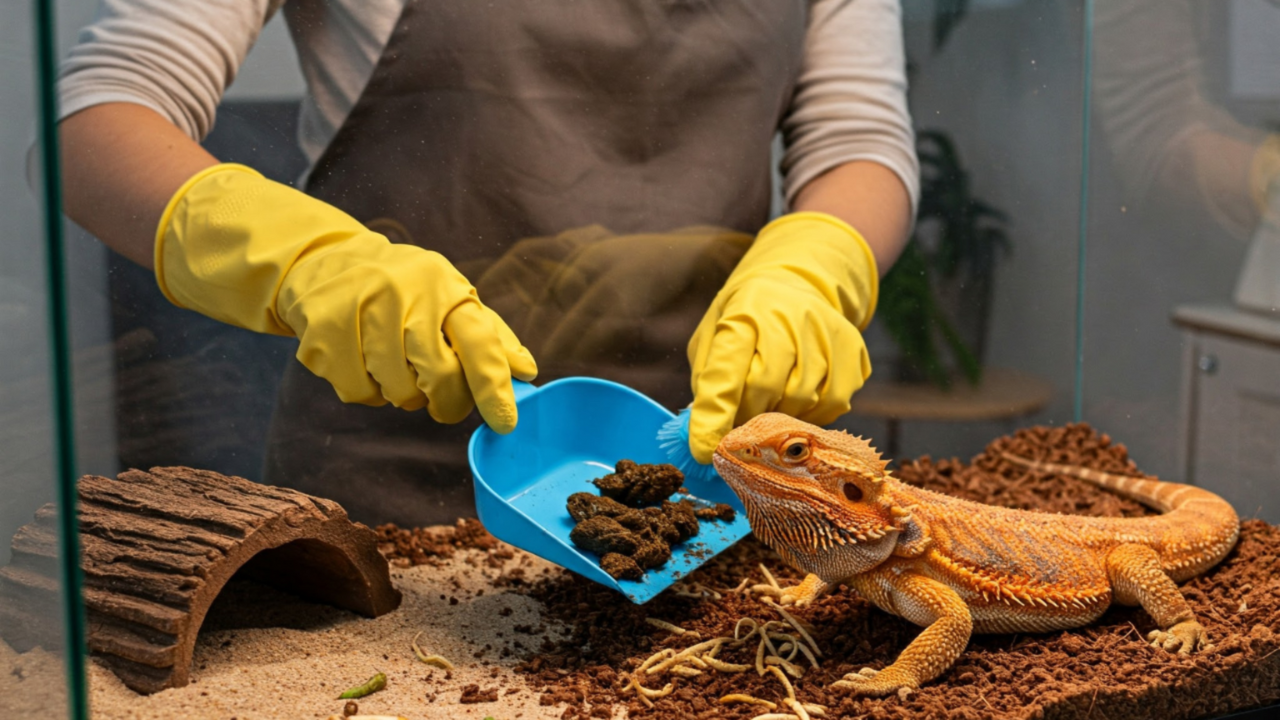
Cleaning the tank regularly helps avoid dirt and bacteria irritating their skin more often. So, regularly clean out any poop, leftover food, and change the substrate (the material on the floor of the tank).
What NOT to Do During a Bearded Dragon’s Shedding?
1. Do Not Encourage Brumation in Juveniles
Juvenile bearded dragons should not be encouraged to brumate (a form of hibernation) in their first winter. Brumation is a natural process for adult dragons, but it can be stressful for young ones and may interfere with their growth and development.
2. Avoid Vegetation That Traps Moisture
Some types of plants and decorations can trap moisture, creating a damp environment. Dampness can cause skin problems and promote bacterial or fungal infections during shedding.
|
Tip: Choose dry, non-absorbent decorations and plants, and monitor humidity levels. |
3. Do Not Use Heat Rocks
Heat rocks can cause burns or uneven heating, which is unsafe for your bearded dragon. Instead, always use a basking light or ceramic heat emitter for consistent, safe temperatures.
4. Avoid Housing in Damp, Cool Conditions
While your dragon does need a humid environment to help with shedding, it’s important not to overdo it. If the environment is too wet (humid) and cold, it can stress your dragon and make it sick with breathing or skin problems.
|
Tip: Keep humidity levels at 30-40% and maintain a temperature gradient in the tank. |
5. Never Pull or Peel Skin
Do not pull off stuck skin; never try peeling it using a tweezer. This can lead to pain, injury, or infections in bearded dragons. If necessary, you can give your pet warm soaks.
6. Limit Handling
Limit handling your pet when shedding, as they might feel irritable or uncomfortable.
Common Shedding Problems Bearded Dragons Experience
|
Issue |
Description |
Common Causes |
How to Fix |
|
Dysecdysis (Abnormal Shedding) |
Skin doesn’t come off properly, leaving patches or areas with stuck skin. |
|
|
|
Stuck Shed |
Skin stuck on areas like toes, nails, or eyes. |
|
|
|
Tail Shedding Issues |
Tail area sheds slowly, leaving the skin stuck. |
|
|
|
Skin Infections (Bacterial/Fungal) |
Infections with swelling, redness, or discharge. |
|
|
|
Yellow Fungus Disease (CANV) |
A fungal infection that causes yellow lesions or sores. |
|
|
When to See a Veterinarian for Your Shedding Bearded Dragon
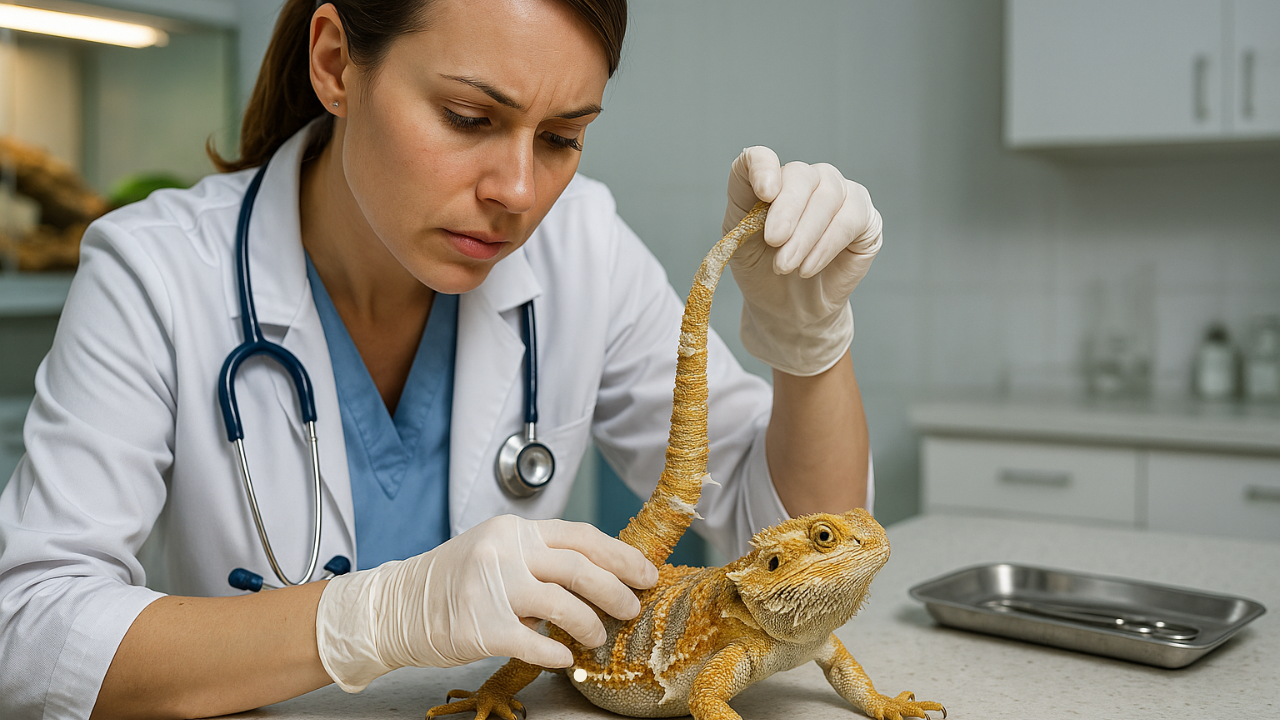
While shedding is natural, some problems, such as stuck sheds or skin infections, shouldn't be ignored or left untreated.
A stuck shed on toes or the tail can tighten and cut off circulation, potentially leading to tissue damage or even loss of digits or the tail tip. Skin infections can worsen and cause significant discomfort and health issues.
It's always best to consult with a reptile veterinarian if:
- Shedding problems persist despite your efforts to ensure warm soaks and proper husbandry.
- You notice signs of infection like swelling, redness, discharge, or worsening blemishes.
- You suspect Yellow Fungus Disease (CANV) requires immediate professional diagnosis and treatment.
- Your bearded dragon also shows other signs of illness, such as prolonged lethargy, a significant lack of appetite that doesn't resolve after the shedding period, or other unusual behaviors.
Your vet can help you determine the exact issue and recommend the best action to make your bearded dragon healthy and comfortable.
Conclusion
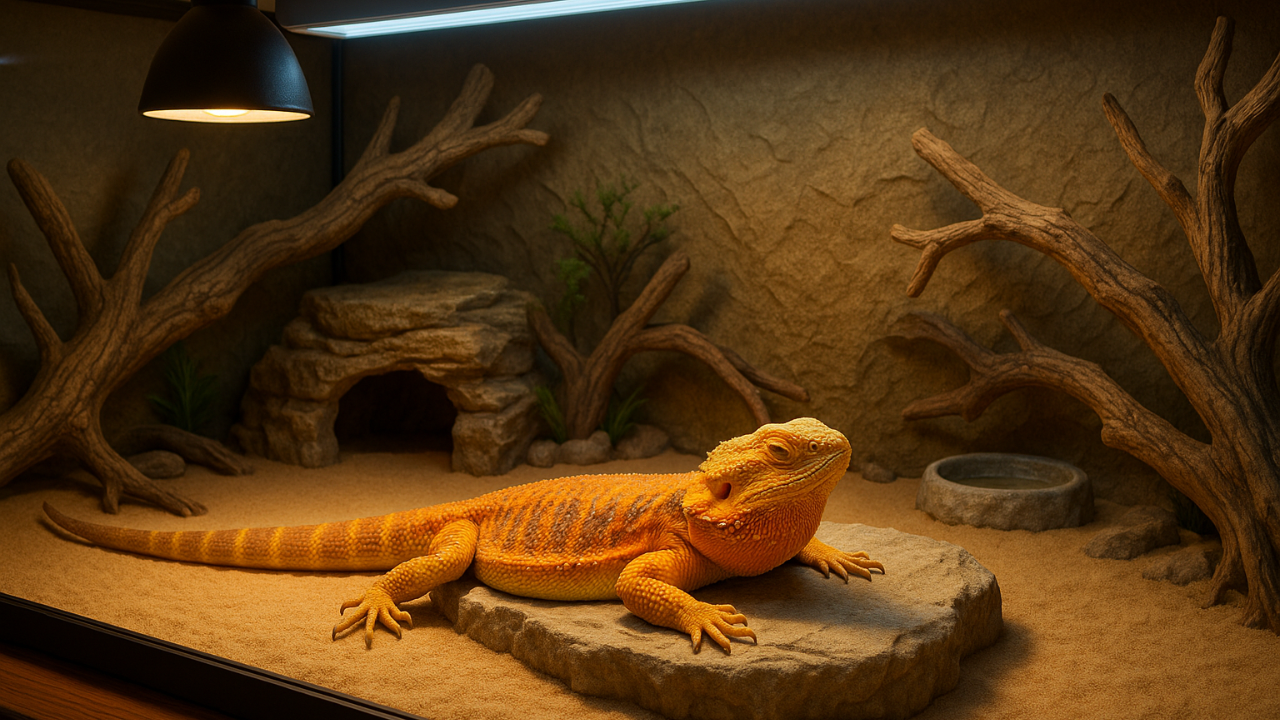
Shedding might look a little strange or even worrying the first few times you see it, but remember, it’s a fundamental part of your bearded dragon's growth and health.
Your role as a responsible owner is crucial in supporting your dragon through this process. Provide the right environment, and being attentive can help make shedding smooth and stress-free for your pet.
So, keep providing the care they need, and they’ll continue to grow happy and healthy!

